As large, premium French cars go, the DS9 is out on its own. Literally. A cursory glance at the new four-door reveals an imposing car with some excellent design touches.
Yet the elephant in the room and main obstacle to its success is its nationality. History shows car buyers are loath to opt for a premium French car over a premium German rival such as an Audi A6, Mercedes-Benz E Class or BMW 5 Series. Never mind one carrying a French brand but built in China.
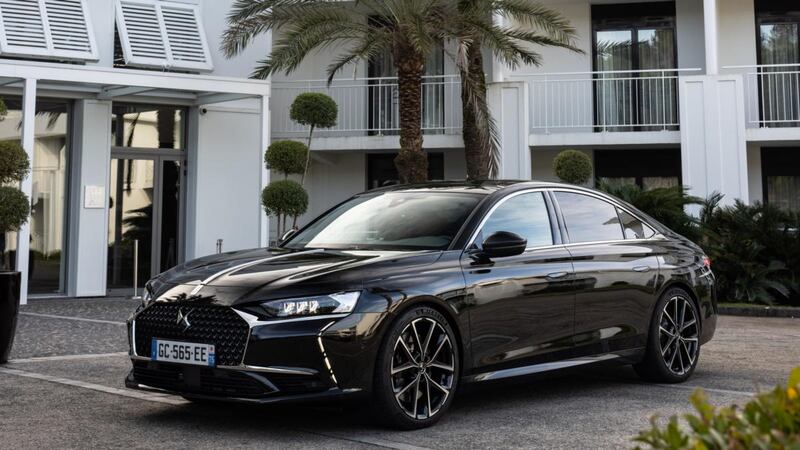
The China-built DS9 is essentially a stretched Peugeot 508 under the skin. Built on an adaptable modular platform, the DS9 gets the supersize treatment. It’s substantially larger than a 508 and longer than the 508 SW estate.
Next to Audi’s A6, the DS9 is a little shorter but also marginally taller and wider. A Mercedes E Class is a similar height and length but the DS9 again tops it for width.
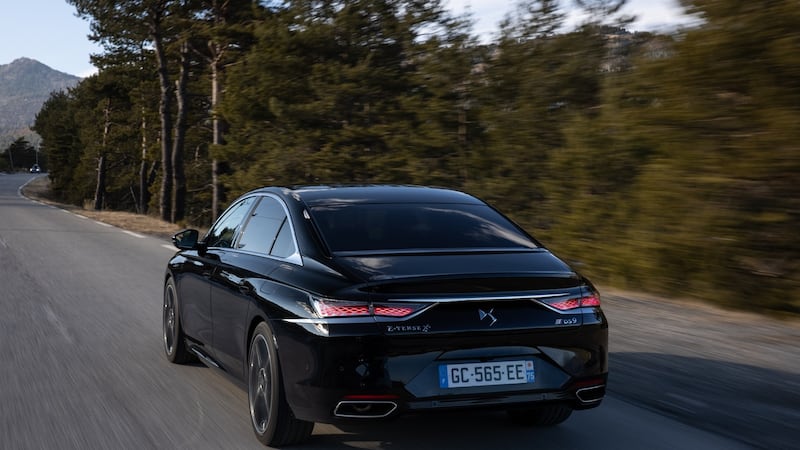
DS has thrown lots of soft leather and Alcantara into the interior to deliver a premium ambiance. Sadly, the DS9's dash-mounted digital and touchscreen displays fail to live up to class-leading rivals such as the E Class and A6.
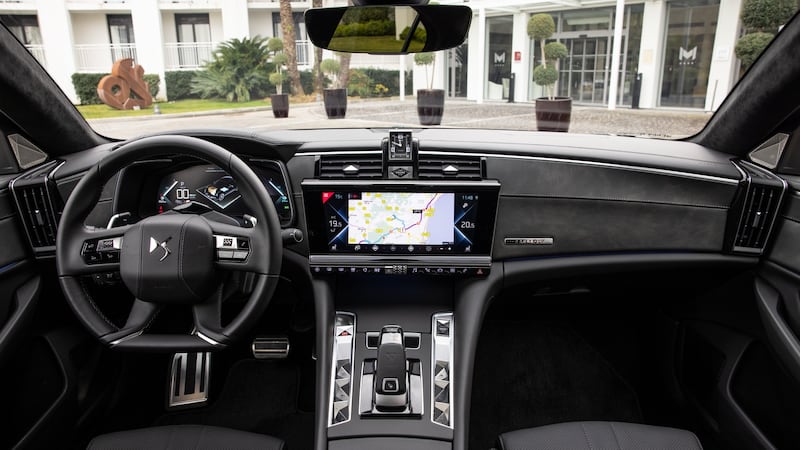
However, as you’d expect from any model from Citroën’s spin-off premium brand, the seating is very comfortable.
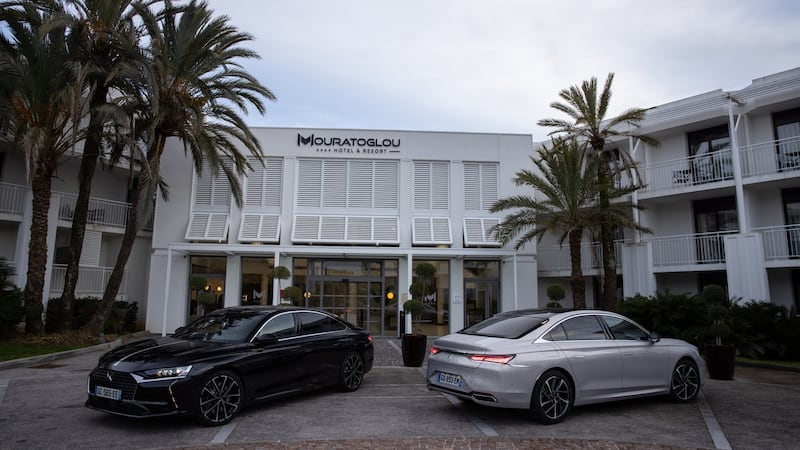
DS's Irish importer, Gowan Group, has opted for plug-in hybrid (PHEV) powertrains for the DS9s landing here. DS calls its electrified models E-Tense and there will be two to choose from: the E-Tense 4X4 360 and E-Tense 250. The 360 comes with a 11.9kWh rechargeable battery and two electric motors, while the 250 has a 15.6kWh battery and one motor.
Impressive electric range
The 250 has an impressive electric range of up to 70km, while on the 360 version that drops to 52km. DS says the thirstiest version is still capable of delivering average fuel consumption of just 1.8L/100km (166mpg) under WLTP standards.
On a variety of roads in the south of France we put the DS9 through its paces. The all-wheel-drive 360 pushes out a combined 360hp and 520nm from its combination of 1.6-litre petrol engine and electric motors.
While put together in China, the 360 version benefits from tweaks and additional parts added on in France by the company’s ‘DS Performance’ division. That means it gets bigger brakes and a slightly wider front and rear track than the 250 version.
Power output and overall ability is sufficient. Getting from standing start to 100km takes 5.6 seconds and the 360 can cruise on electricity alone at up to 140km/h. However, when accelerating hard, the combination of its automatic gearbox and 1.6-litre petrol engine emit a far-from-premium racket.
Take things more sedately and the four-cylinder combines reasonably well with its dual electric motors through the car’s automatic gearbox to deliver a truly capable cruiser that is quick yet somehow doesn’t feel overly rapid.
In EV mode, the DS9 uses a 113hp rear-mounted motor and if you want a boost of speed or traction, the 110hp gearbox-integrated front electric motor will kick in also. At higher speed, the 200hp engine kicks in with additional assistance when needed from the electric motors.
Several driving modes feature in DS9. Comfort, Hybrid, Sport and 4X4 deliver the responses you’d expect, and of course there is Electric mode. Refreshingly, the car will stay in electric mode during normal driving.
Surprising noise
Overall, the DS9 360 feels very nice and spirited. On the roads outside Nice, some surfaces delivered a surprising degree of noise into the cabin that didn’t feel premium: in my mind I was prepared for utter silence. Having ensured the windows were fully closed, I even stopped and checked the doors were firmly shut.
DS has fitted an on-board energy app that coaches drivers to attain maximum efficiency. I managed 94 per cent in the 360 and then got bored with it, which confirmed it is pretty pointless in a powerful car.
Next up, we took out the E-Tense 250 front-wheel-drive DS9. Despite having 110hp less, it felt like the better car. The handling is quite nimble and precise, and the lack of weighty all-wheel-drive systems is noticeable.
This version of the car also car feels quick, even if the 0-100km/h time of 8.1 seconds is on paper significantly slower than its sibling.
The 250 can cruise using electric power at up to 135km/h and its average fuel consumption figure (with a full battery) is an astonishing 1.1L/100km (257mpg).
Ireland will get two trim grades: Performance Line+ and Rivoli+. Vast amounts of safety and driving aids feature. The main stock of DS9s arrive in Ireland in April.
Irish pricing is being negotiated but is expected to be similar to premium rivals. Yet there is no doubt about the challenge facing this car. Not only must it convert people to the badge and lure them away from established premium rivals, but it’s competing in a segment of the market – saloon cars – that is suffering under the cosh of booming SUV crossover sales.
DS says it's seeking out premium buyers who are "independent thinkers". These are the same people being pursued by the likes of Tesla, Lexus and Volvo. It must also overcome sniping of some who dismiss it as a Citroën with notions of grandeur.
EV test bed
The DS E-Tense Performance prototype was conceived as a test bed for new EV technology that the brand may utilise in future models. The stunning coupe features a drivetrain from a Formula E race car in a carbon-fibre monocoque.
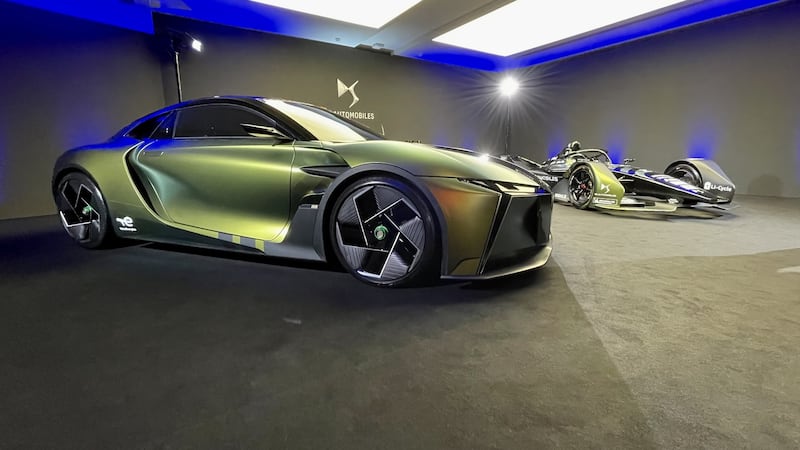
The prototype features dual motors and all-wheel drive. It generates an incredible amount of power: 815hp and 8,000nm – yes, eight thousand newton metres of torque. Using its Formula E expertise and know-how, DS says it can get the prototype’s 8000nm of torque to the road with very careful distribution management.
The fact that its rubber tyres can remain attached to the wheel rims during this power deliver is even more astonishing. The prototype can accelerate from 0-100km/h in a neck-snapping two seconds. The car is currently undergoing testing by Formula E champions Jean-Éric Vergne and Antonio Felix da Costa. It is breathtaking car in the flesh, and genuine bedroom poster material.

















